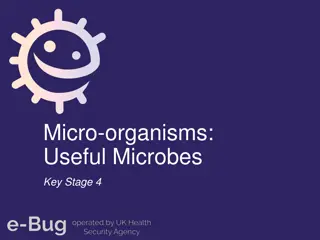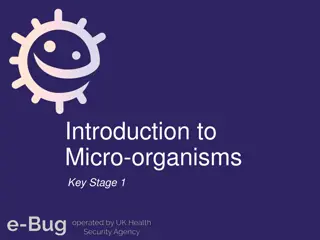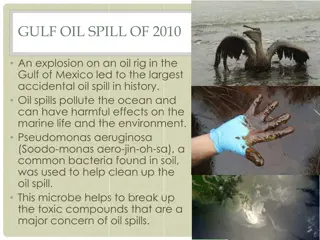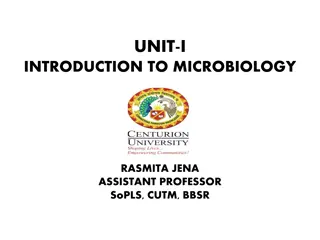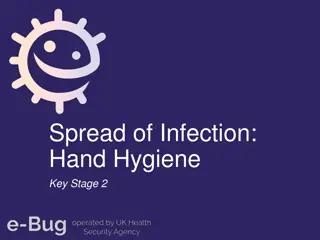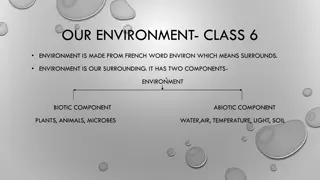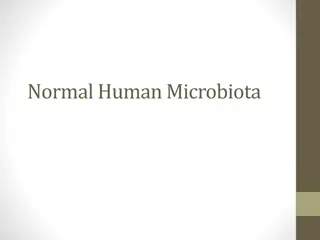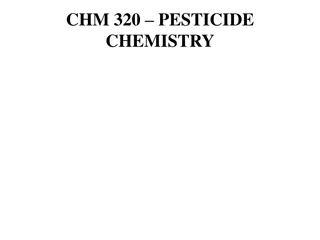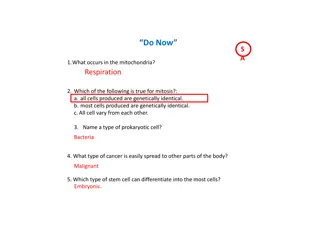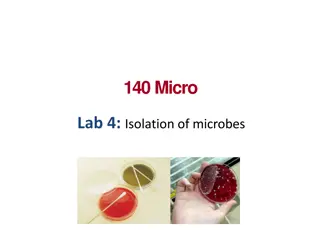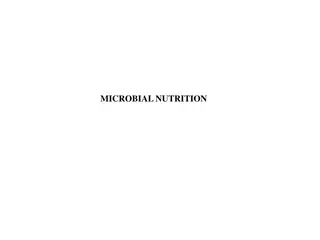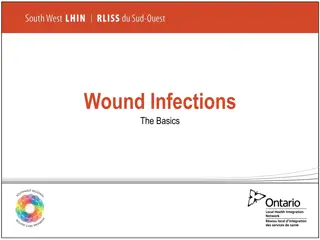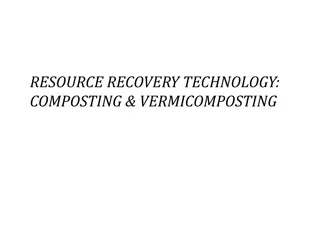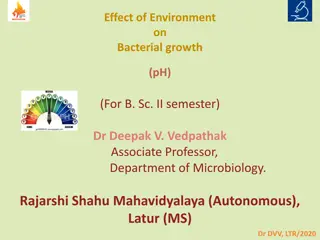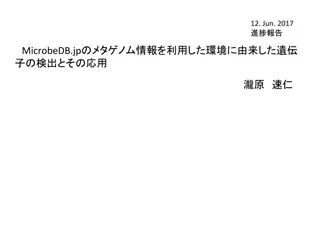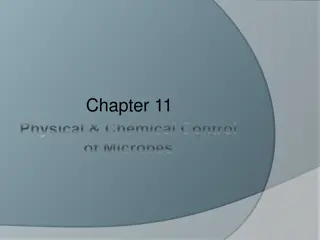The Importance of Microbes in Our World
Microbes, tiny organisms invisible to the naked eye, play crucial roles in various ecosystems. They are found abundantly in soil, air, and even inside buildings. Microbes aid in nitrogen conversion for plant growth, photosynthesis, decomposition, and food production. Without microbes, life on Earth would significantly suffer.
Download Presentation

Please find below an Image/Link to download the presentation.
The content on the website is provided AS IS for your information and personal use only. It may not be sold, licensed, or shared on other websites without obtaining consent from the author. Download presentation by click this link. If you encounter any issues during the download, it is possible that the publisher has removed the file from their server.
E N D
Presentation Transcript
Small things can be a big deal Scott Hanson ND EPSCoR Tribal Colleges/Universities Liaison and NATURE Manager 10/17/2018 1
What is a microbe? A microbe (or microorganism) is any living thing that is small enough to require a microscope to see it. Bacteria, viruses, most algae, most fungi, and protozoa are microbes algae protozoa virus 10/17/2018 2
Where are microbes found? Microbes are the most widely-distributed of all living things. A square inch of soil may contain a million microbes. Fertile soil may contain a ton of microbes per acre. 10/17/2018 3
Where are microbes found? In each cubic meter of air inside most buildings there are 400-900 microbes. You inhale about 8 microbes each minute. They are found in such unlikely places as the polar ice cap and the near-boiling hot springs of Yellowstone National Park. The orange, yellow and green colors in the photo are the bacteria. 10/17/2018 4
Why are microbes important? Some soil bacteria convert nitrogen into a form that plants can use to grow. Without them, plants would not be able to grow fast enough to sustain life on earth. Most photosynthesis on earth is performed by microbes. Algae and photosynthetic bacteria, to be specific. Photosynthetic bacteria 10/17/2018 5
Why are microbes important? Other microbes decompose dead plants and animals and waste material from living organisms. Certain protozoans live in the digestive tracts of grazing animals and provide a necessary digestive enzyme. Without them, cows and horses would not be able to digest the grass and hay they eat. Very similar protozoans in the guts of termites enable them to digest wood. Digestive protozoan in termite gut 10/17/2018 6
Why are microbes important? Microbes are necessary for production of pickles, sauerkraut, yogurt and other dairy products, fructose in soft drinks, and the artificial sweetener aspartame. Yeast, which are included in the fungus kingdom, is the leavening agent in bread. Microorganisms synthesize antibiotics. A type of fungus from the genus Penecillium produces penicillin (below). 10/17/2018 7
Why are microbes important? Certain microbes break down oil in oil spills Genetically engineered bacteria produce interferon, growth hormones and insulin (below). 10/17/2018 8
How are microbes grown in the lab? Agar is a polysaccharide (a long chain of sugar molecules) from seaweed. It is a soft solid at room temperature. When nutrients are added to agar, it is called nutrient agar. Nutrient agar has all the nutrients required to grow almost any bacteria or fungus. 10/17/2018 9
How are microbes grown in the lab? You will grow populations of bacteria and fungi on nutrient agar in plastic petri dishes. 10/17/2018 10
What are bacteria? Almost all bacteria are single-celled organisms. Their small cells are so primitive that they do not have a nucleus. People tend to think that all bacteria are harmful, but less than 1% are harmful to humans. 10/17/2018 11
What are fungi? Most fungi are single-celled organisms. Some are larger, such as the mushrooms. All fungi are decomposers of dead organisms. 10/17/2018 12
If bacteria and fungi are microscopic, how will I know whether they are growing on my nutrient agar plates? When a single bacterium or fungus spore lands on the surface of the nutrient agar, it starts to multiply and produce a growing number of cells (called a colony) at that spot. The colony eventually gets large enough to see. Bacterial reproduction 10/17/2018 13
How can you tell bacteria from fungi on nutrient agar? Bacterial colonies have definite margins and look wet or shiny. 10/17/2018 14
How can you tell bacteria from fungi on nutrient agar? Fungal colonies look fuzzy or powdery. 10/17/2018 15
1 6 Now, please Now, please do activities 1 do activities 1 and 2 and and 2 and complete the complete the results and results and discussion discussion sections. sections.
Activity 1 1. Make sure that you can find cotton swabs, Scotch tape and a marker. 2. With a marker, label of it as unwashed finger , of it as washed finger, of it as cell phone and of it as anything else you would like to examine, such as a doorknob, toilet seat or keyboard. 3. Use a cotton swab to rub a cell phone and then wipe it onto the surface of the nutrient agar. 4. Rub another cotton swab (or the other end of the same swab) on the optional surface you chose. Record the type of surface you chose in the Activity 1 Tables below in the cell right below the cell phone cell. 5. Touch your unwashed fingertip to the unwashed finger portion of the nutrient agar. 6. Wash your hands. 10/17/2018 17
Activity 1 7. Touch your washed fingertip to the washed finger portion of the nutrient agar. 8. Seal the edge with Scotch tape. 9. Leave the plate undisturbed at room temperature for 48 hours. 10. Take a digital photo of the plate. 11. After 48 hours, take a look at the plate and record your results on the Results Table below 10/17/2018 18
Activity 2 1. Label a nutrient agar plate 30 minutes . 2. Lift the lid and let the plate sit undisturbed for 30 minutes. 3. Put the lid back on and seal the edge with Scotch tape. 4. Label a nutrient agar plate 4 hours . 5. Lift the lid and let the plate sit undisturbed for 4 hours. 6. Put the lid back on and seal the edge with Scotch tape. 7. Leave the plate undisturbed at room temperature for 48 hours. 8. Take a digital photo of the plate. 9. After 48 hours, take a look at the plate and record your results on the Results Table below. 10/17/2018 19



